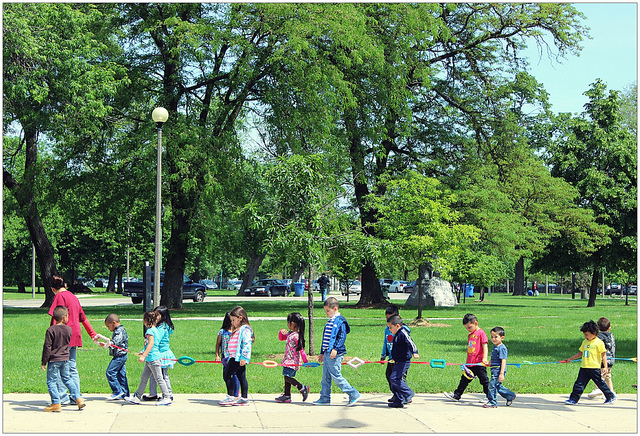Less Than A Third Of Illinois Residents Can Afford Child Care
By Austin Brown in News on Apr 6, 2016 8:20PM
It's sadly not uncommon for Illinois residents to struggle with balancing the costs of child care, rent, and personal expenses, according to a new report. In fact, based on the standards of the U.S. government, they're the majority.
According to a new study on child care costs from the Economic Policy Institute, child care in Illinois costs an average of nearly $13,000 a year. For families with one child, child care is estimated to cost around a fifth of a family's income—and around $2,000 dollars more than your average yearly rent. For two children, the infant care cost skyrockets to more than twice Chicago's average rent and a third of a family's annual income. Based on all of these findings, the study found that only 22.3 percent of families were able to afford family care based on U.S. Department of Health and Human Services standards—that is, having infant care costs that are less than 10 percent of their income.
Perhaps most bafflingly, the EPI also found that child care workers themselves would need to spend more than sixty percent of their annual income to put one child in child care--not to mention the fact that in nearly half of Illinois's metropolitan areas, less than ten percent of child care workers can afford the cost of living in their area. Not only can child care workers not afford to get child care, they also can barely live off of providing it.
These findings aren't limited to the Prairie State, but they are especially intense here; the cost of child care in Illinois was the eighth most expensive out of all fifty states and the District of Columbia.
In response to these findings and their national impact, the EPI has made sweeping proposals to launch more public investment in child care. Key parts of their proposals include improving (read: establishing) standards of child care nationwide, developing policy to subsidize public child care, and improving funding for nursing programs across the country. To justify the cost—which is a marginal 0.5 percent of the GD—the EPI says improving childcare affordability would have developmental benefits for children, improve women's access to the work force, and broadly benefit families of all economic backgrounds.
"This potential opportunity can only be realized," the study says, "if we are prepared to make an ambitious national investment in America’s children—investments aimed at providing higher-quality development and educational opportunities for all children from birth."
